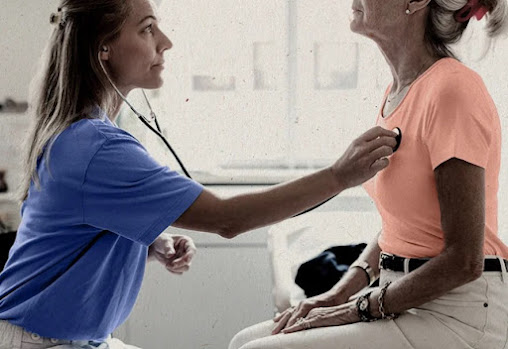Sinus Tachycardia is a condition when the heart beats faster than normal. Sinus tachycardia occurs when the sinus node or sinoatrial node, the heart's natural pacemaker, triggers electrical impulses that are abnormally fast.
We can have normal or abnormal sinus tachycardia. Normal sinus tachycardia refers to a physiological increase in heart rate that occurs in response to certain factors, such as stress, exercise, pain, or fever.
Meanwhile, abnormal sinus tachycardia has no known cause. If you do, you may experience an increased heart rate all the time, even at rest.
 |
| Sinus Tachycardia |
1. Recognize Sinus Tachycardia, From Normal to Abnormal
Tachycardia refers to an increase in heart rate that exceeds 100 beats per minute (bpm). The sinoatrial node is a specialized collection of electrical cells in the right upper chamber of the heart. These cells act as a natural pacemaker by sending electrical impulses to the surrounding tissues. This impulse causes the heart to contract.
A properly functioning sinoatrial node regulates the rhythm and rate of our heart. According to the American Heart Association, the heart rate is usually in the range of 60–100 bpm at rest. However, it is often lower in athletes.
You can develop sinus tachycardia for many reasons. The underlying cause will determine the likely outcome of someone with this condition.
Types of sinus tachycardia include normal and abnormal sinus tachycardia.
Normal sinus tachycardia
Normal sinus tachycardia involves a known cause for the increased heart rate. According to the publication StatPearls, causes of normal sinus tachycardia can include:
- stress.
- Painful.
- Worry.
- Sport.
- Stop consuming alcohol.
- Low blood sugar levels.
- Dehydration.
- Use of stimulants, such as caffeine.
The causes of sinus tachycardia may be a part of our daily lives, although people experiencing these symptoms of anxiety may see a doctor.
Abnormal sinus tachycardia
Abnormal sinus tachycardia occurs for unknown reasons. This can cause a faster heart rate, even when resting. According to a March 2017 report in the journal Internal Medicine, doctors sometimes misdiagnose abnormal sinus tachycardia as a symptom of a mental health condition, such as depression.
The main difference between an abnormal sinus tachycardia and a normal sinus tachycardia is that an abnormal sinus tachycardia usually has no known cause and occurs at rest or when the heart responds disproportionately to movement.
2. Cause Sinus Tachycardia
Reported by Mercy Health, while the exact cause of abnormal sinus tachycardia is unknown, it can be caused by several problems. The most common causes include:
- Problems with the sinoatrial node.
- Triggers that cause the heart rate to increase.
- Nerve dysfunction that causes decreased heart rate.
Common triggers of sinus tachycardia include:
- Heart failure or heart attack.
- Mitral valve prolapse.
- Pulmonary embolism.
- Lung disease.
- Infection from viruses.
- Worry.
- Dehydration.
- Anemia.
- Hypothyroidism.
- Low blood pressure.
- Sepsis.
- Mercury poisoning.
- Electric shock.
- Drug withdrawal.
- hypoxia.
Sinus tachycardia risk factors:
- Anemia.
- Diabetes.
- Heart disease.
- Drinking too much alcohol or caffeine.
- High blood pressure.
- Thyroid problems, such as an overactive or underactive thyroid.
- Sleep apnea.
- Smoke.
- Using stimulant drugs.
- Psychological stress.
3. Symptoms
Many people have no symptoms of tachycardia. Reported by the Cleveland Clinic, if there are symptoms, they often don't last long. Symptoms may include:
- Faster heart rate.
- Palpitations
- Faint.
- Chest pain.
- Dizzy.
- It's hard to breathe.
- Dizzy.
Abnormal sinus tachycardia symptoms can include:
- Hard to breathe.
- Fatigue.
- Inability to handle physical exercise.
- Palpitations
4. Diagnosis
To diagnose sinus tachycardia, your doctor may order several tests to measure how your heart is working. These may include:
- Electrocardiogram (EKG), which measures the electrical activity in the heart.
- Holter monitor, which measures heart rate for 24 hours.
- Chest X-ray.
- Pulse oximetry.
- Reducing caffeine intake.
- Quit smoking and avoid other sources of nicotine.
- Exercise routine.
- Drink enough water.
- Consume less than 2,300 milligrams (mg) of sodium per day.
- Sinus tachycardia is usually a benign condition, but it can weaken the heart over time if it persists. Doctors refer to this as tachycardia-induced cardiomyopathy.
Comments
Post a Comment